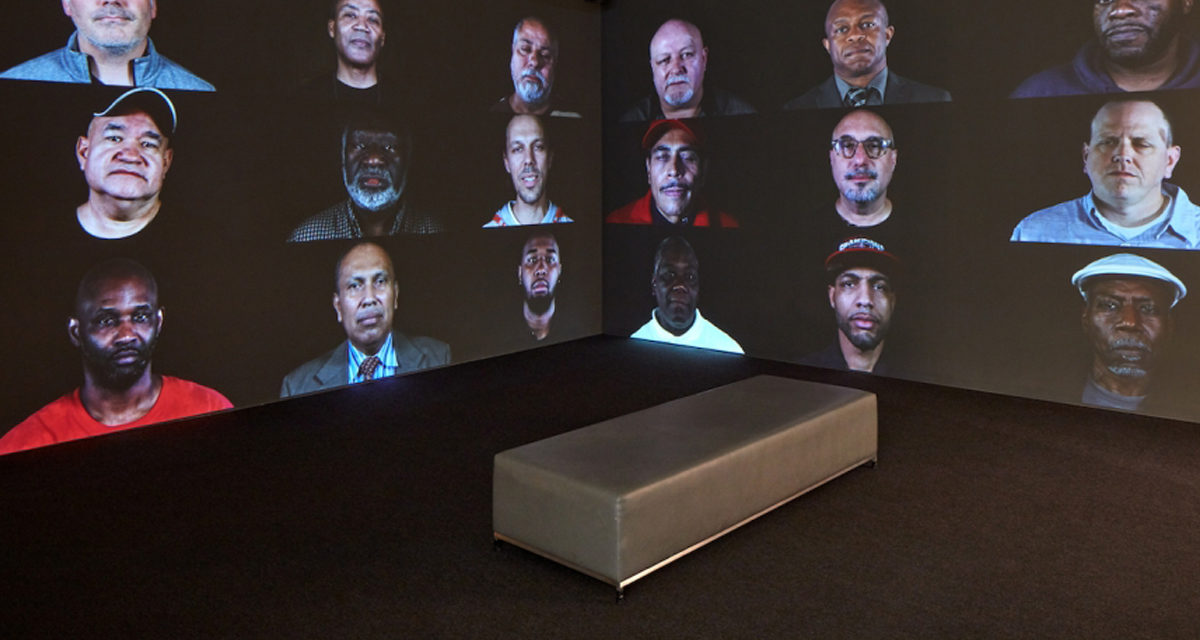Rashin Fahandej, A Father’s Lullaby, 2019. Installation view, The 2019 James and Audrey Foster Prize, the ICA/Boston. (Courtesy of http://www.rashinfahandej.com/a-fathers-lullaby)
by The Fleshtone Staff
Curators of online and physical presentations, spotlighting the thinkers and artists shaping your world view.
REVIEW: Institute of Contemporary Art
2019 James and Audrey Foster Prize
Rashin Fahandej A Father’s Lullaby, 2019
The Institute of Contemporary Art James and Audrey Foster Prize focuses on Boston-area artists with exceptional contributions to contemporary art and the community. Curator Ruth Erickson conducted individual studio visits with fifty Boston area artists before selecting the awardees: Rashin Fahandej, Josephine Halvorson, Lavaughan Jenkins, and Helga Roht Poznanski.
As my body slides through the galleries at the Institute of Contemporary Art in Boston, I start to pick up on a subtle hum, remincinist of the poetry and song that my father sang to me as a child. As I step closer towards the room, I am fully immersed in Rashin Fahandej’s installation, A Father’s Lullaby. The room is all black, with large projections on three of the walls. To my left, on the fourth wall, museum viewers sit on stools facing three dimly lit window panes. Their arms are outstretched with their hand on the window, an act necessary to begin the audio program on the corresponding headphones. The color of the window is a soft yellow that you might see on a moonlit stroll passing a row of homes. This is juxtaposed with the texture of a worn plexi-glass that you might hold your hand to while visiting a loved one in jail. Fajandej subjects the viewer to a system of actions that directly connects to the multiple steps families take to visit an incarcerated family member. I wait in line for a long time, to be able to sit on the stools, just as a family member would wait when arriving at a correctional facility.

(Courtesy of the ICAboston.org) Photo by Charles Mayer.
As I place the headphones on, I am captivated by the story of a father swept under by the inequalities in the criminal justice system. The father speaks of his relationship to his children, his family and the pain of his absence from their lives. Whenever I remove my hand from the window pane, I lose connection with the father and the sound of his voice. I return my hand to the window and he begins again from the beginning. I feel like I am letting him down every time I drop my hand, forgetting his story, moving on to the next one, just like the criminal justice system sorts through cases. Physically, I feel the pain of the father’s absence as I hold my arm up for unbearable amounts of time just to be able to hear his story. The pane shows the hand-prints of many listeners illustrating the immense circulation of prisoners and their visitors. Fahandej’s adroit articulation of the panes becomes a poetic symbol for the transience of the justice system and the pain that is conflicted on both the families and the prisoners in their absence.
A Father’s Lullaby sets itself apart from other art throughout time that has unveiled the criminal justice system. The thoughtfulness of the installation and interaction it requires from the viewer are unparalleled. A father’s lullaby could be considered a simple gesture, an attempt to lull an overactive child to sleep, or a diversion. Fahandej knows that a father’s lullaby is a remarkable gesture of love that creates a story of connection between a father and his child. Fahandej employs this gesture of love, requiring the viewer to confront their role in dehumanizing prisoners and ex-convicts. She asks the viewer to listen carefully and sit longer because these fathers need their children as much as their children need them.


